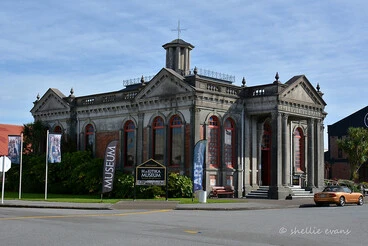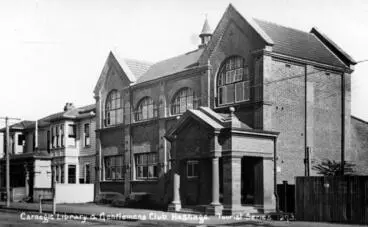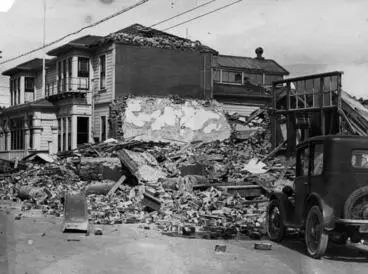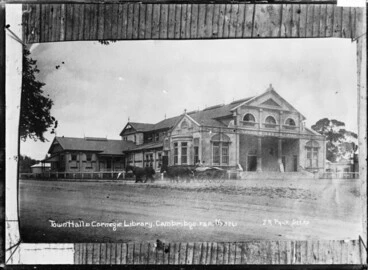Carnegie Libraries in New Zealand
A DigitalNZ Story by Kowhai Reader
Scottish/American philanthropist was responsible for the creation of a number of public libraries in New Zealand, some still standing today.
Andrew Carnegie was born in Scotland in 1835 and moved to Pennsylvania, America in 1848. His philanthropy in relation to libraries was inspired by his experience visiting the library of a local businessman, who opened it to working boys for free once a week.
After working in a cotton mill and telegraph office, Carnegie got a job in the railroad industry where he rapidly advanced investing in both railroad and related industries, including iron and steel. He retired in 1901, selling his company for US$480 million. His share of this was more than $200 million which he used for charitable purposes during his lifetime and subsequently through the Carnegie Foundation following his death in 1919.
Andrew Carnegie
Manatū Taonga, the Ministry for Culture and Heritage
Carnegie Library, Clutha
Museum of New Zealand Te Papa Tongarewa
Carnegie Library Building, Hokitika
Manatū Taonga, the Ministry for Culture and Heritage
Based on the benefits of libraries to his own career and life, building libraries was one of his key philanthropic objectives. He is responsible for the building of 2509 libraries in the United States, Britain and Ireland, Canada, the Carribean, Australia, Fiji and New Zealand. In all, 18 Carnegie libraries were built in New Zealand.
Carnegie Free Public Library at Hokitika
Alexander Turnbull Library
Carnegie Public Library, Dunedin, New Zealand
Museum of New Zealand Te Papa Tongarewa
Grants to build a Carnegie library were given on a number of conditions. The local council was required to do it's part by certifying the site on which the library was to be built was debt-free and guaranteeing an annual sum for maintenance of the library. It was also a requirement that the library be a "free public library". This had some wriggle-room in light of society and rules of the day. For instance "free" for Cambridge Library mean that "all persons over 14 years of age residing in the borough should be able to take out one book free per week, with those paying a subscription able to borrow a further two books".**
Carnegie Library and Gentlemen's Club, Hastings
MTG Hawke's Bay
Carnegie Library, Market Street, Hastings
MTG Hawke's Bay
25 New Zealand towns, boroughs and district councils approached Carnegie for library grants. Ultimately Carnegie libraries were built in Balclutha, Gore, Dunedin, Alexandra, Fairlie, Timaru, Hokitika, Westport, Greymouth, Levin, Dannevirke, Marton, New Plymouth, Hastings, Cambridge, Thames, Hamilton and Onehunga.
Town Hall & Carnegie Library, Cambridge, ca 1910s - Photograph taken by Frederick George Radcliffe
Alexander Turnbull Library
Mickey Smith and the Carnegie Libraries
Radio New Zealand
Sources for additional information.
New Zealand Geographic article Carnegie Libraries Issue 76 Nov-Dec 2005 https://www.nzgeo.com/stories/carnegie-libraries/
New Zealand History Korero a ipurangi o Aoteareoa Andrew Carnegie https://nzhistory.govt.nz/media/photo/andrew-carnegie
Encyclopaedia Britannica online Andrew Carnegie https://www,britannica.com/biography/Andrew-Carnegie




